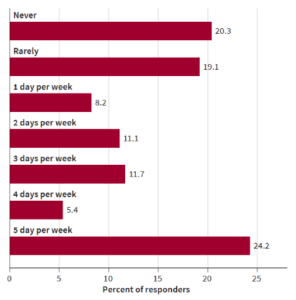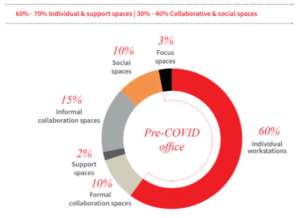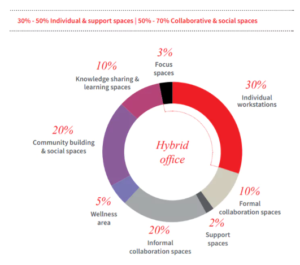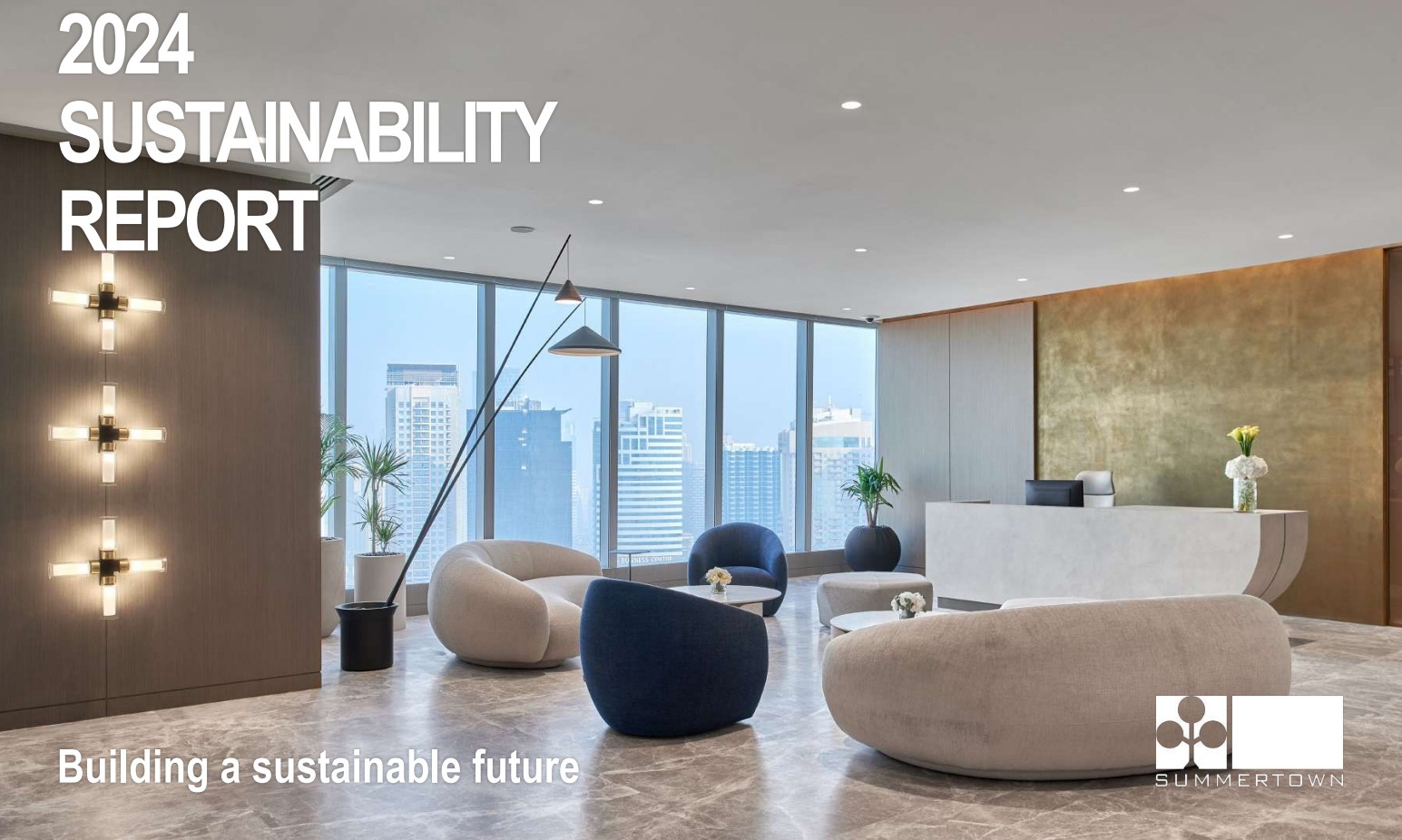The COVID-19 pandemic has accelerated workplace change – how we work, use technology to connect, and the location of work. Employees across the globe have demonstrated their ability to be productive when working from home (WFH), and employers have recognised the benefits of having a WFH option. So, what is the future of the office or workplace – WFH, return full time to the office or workplace or a combination of both?
“Most Google employees want to return to the office at some point, but not every day, according to a recent Google survey of its employees’ desires for post-pandemic work.” [1]
Google employees are not the only ones thinking this way. There is substantial evidence and examples of companies already practicing a hybrid model of both WFH and in the office. As stated in their latest Middle East research, global real estate firm JLL also believe “the future of the office will be hybrid, making the best out of each world.”[2]
As we transition to a post-pandemic workplace, companies need a sustainable option that works in the long term for both employees and employers. Below we explore the most common hybrid models, the impact on the office, and highlight five key success factors for implementing the hybrid model.
What is the most common hybrid model?
Companies are assessing their long term post covid-19 working environments, focussing on the balance of employee productivity levels and face-to-face connection to determine the right combination.
Numerous surveys and research have been conducted in 2020 during the COVID-19 pandemic, which points to a hybrid model of “three days per week in the office and two working remotely.” [3] “Nicholas Bloom, a Stanford University economics professor with expertise in remote work, believes that once the pandemic subsides, working from home two days a week will be optimal for balancing collaborative and quiet work, while benefitting from the reduced stress of less commuting.” [4]

Source: Response to the questions: “In 2021+ (after COVID) how often would you like to have paid work days at home?“ Data from a survey of 2,500 US residents aged 20 to 64, earning more than $20,000 per year in 2019 carried out between May 21-25, by QuestionPro on behalf of Stanford University. Sample reweighted to match the Current Population Survey.[5]
Two or three days WFH may not be applicable for everyone, some people may not want to, or their job cannot be performed from home, but the having the option and flexibility for employees is essential.
What is the impact on traditional office workplaces?
Aside from the additional hygiene and safety measures that will be present post-pandemic, the traditional physical office space will evolve. Adoption of the hybrid model provides an opportunity for companies to change their work environment and improve the employee experience. Each week would be different, some employees will be based in the office, while others will WFH or other flexible locations. To accommodate the new way of working under a hybrid model, physical fit out changes should include adjusting the space to be more flexible, accommodate team collaboration, and also function as a social hub.
One workplace design option aligned to the hybrid model is activity-based working (ABW), which has a variety of workspaces that allows employees to choose their workspace based on the task or activity. ABW is an established model that encompasses the notion of flexible workspaces, replacing the traditional fixed desk, and embraces an autonomous ‘on demand’ culture of working.
According to a JLL’s Middle East latest workplace research, under a hybrid model companies “embracing the workplace of tomorrow will provide opportunities to shift space take, use and distribution.” [6] Proposing that individual workspaces will reduce from 60%-70% to 30%-50% and collaborative and social spaces will increase from 30%-40% to 50%-70%.


Importantly, any workplace changes should incorporate employee wellbeing, with a focus on making the workplace healthier and safe. As long-term advocate of the sustainable interiors we have first-hand experience of incorporating wellbeing into sustainable workplaces and understand the key connection between sustainable interiors and the hybrid model.
Key Tips for Implementing the Hybrid Model
1. Hybrid Model Company Policy
A formal hybrid model policy needs to be developed and implemented by Senior Management and HR to include:
- Defined guidelines and expectations for the Hybrid model.
- For example, maximum or minimum WFH per week.
- WFH and hybrid procedures and guidelines for technology/IT use.
- Employee Performance & Appraisal System
- Establish a formal performance and appraisal system.
- If all employees are evaluated based on their output (what they accomplish against specific goals) this will accommodate WFH employees.
- Employee inclusion
- Develop guidelines that create a culture that includes all and that is not location specific.
- Employee wellbeing
- Conduct wellbeing activities online, in the office and incorporate wellbeing into any office workspace changes.
- “Balancing hybrid work’s flexibility and autonomy with the risks of “always-on” culture”[7] is a challenge for employee wellbeing that needs to be addressed under a hybrid model.
2. Meeting Guidelines
- Establish an etiquette or guideline for online meetings.
- Assign certain days for in-office face-to-face meetings. “A common procedure of existing hybrid companies, accelerated since the pandemic started, is to designate certain days for in-office meetings and collaboration, and remote days for work involving individual focus.”[8]
3. Communication
- Establish a communication hierarchy or channel to ensure all employees no matter their location have access to company communication and news.
- Ensure managers communicate on a regular basis with their teams (weekly meetings etc.)
- Use online calendars/schedules to indicate the days employees are WFH.
4. WFH should be optional
- Not everyone wants to WFH
- Not everyone has the space at home or facilities to WFH
- Some jobs cannot WFH. These should be defined in the company policy and individual job descriptions.
- “Health-vulnerable employees may need to continue to work from home until scientists develop an effective COVID-19 vaccine.”[9]
5. Adjust your office or workspace
- Change your workplace design and fit out to be more flexible, accommodate team collaboration, and be a social hub.
- Reduce the office floor space for financial gain if more people are working from home long-term, however a re-design and new fit out of the physical workspace to be more flexible may be more beneficial.
- Technology – upgrade technology to be seamless in the office and for employees WFH.
- Upgrade hygiene and well-being equipment and fixtures in high risk service-related areas such as bathroom and pantry areas.
There is no doubt our workplaces will change as a result of the coronavirus, and we believe the hybrid model is the future of work and is one positive outcome from pandemic.
References:

